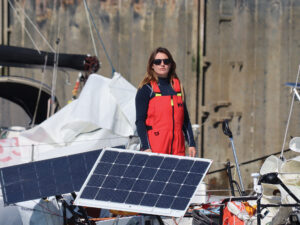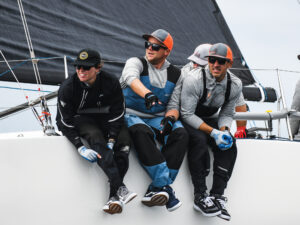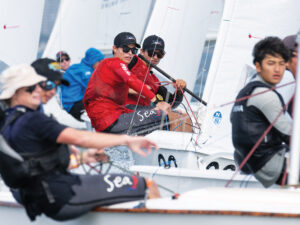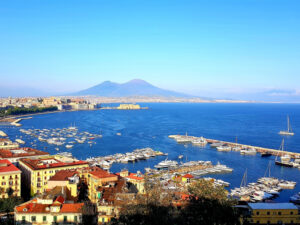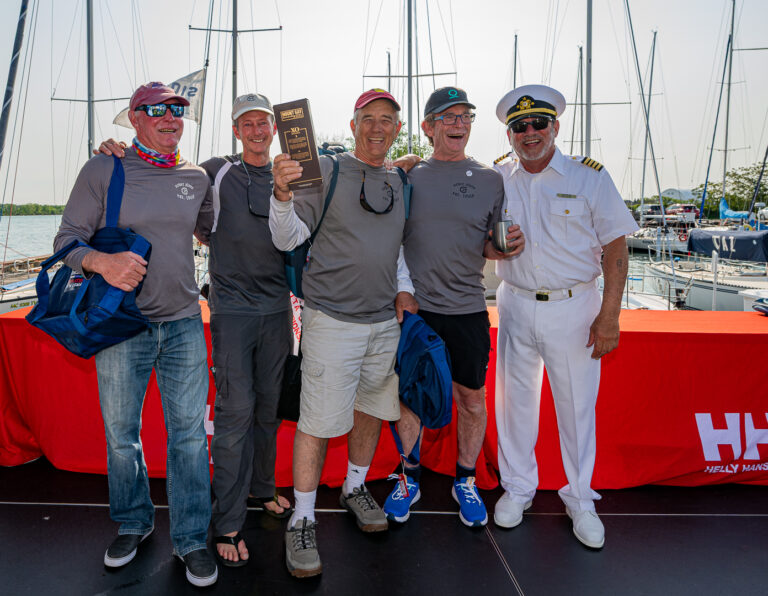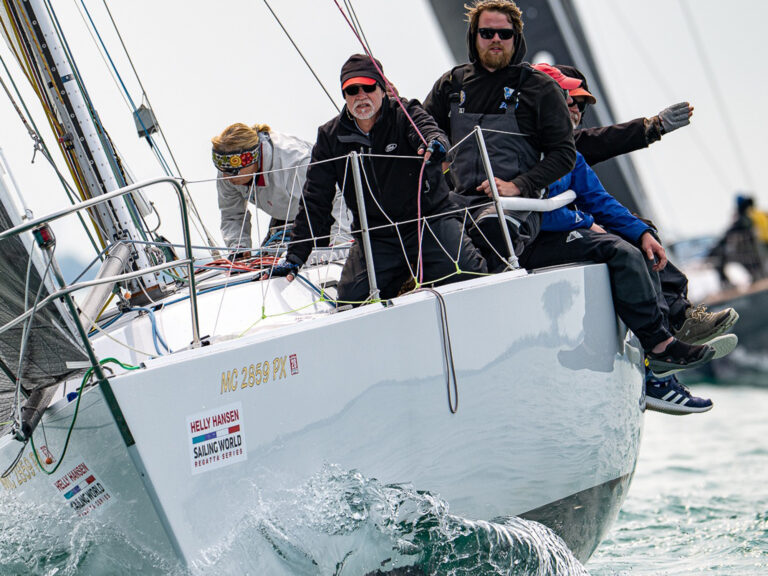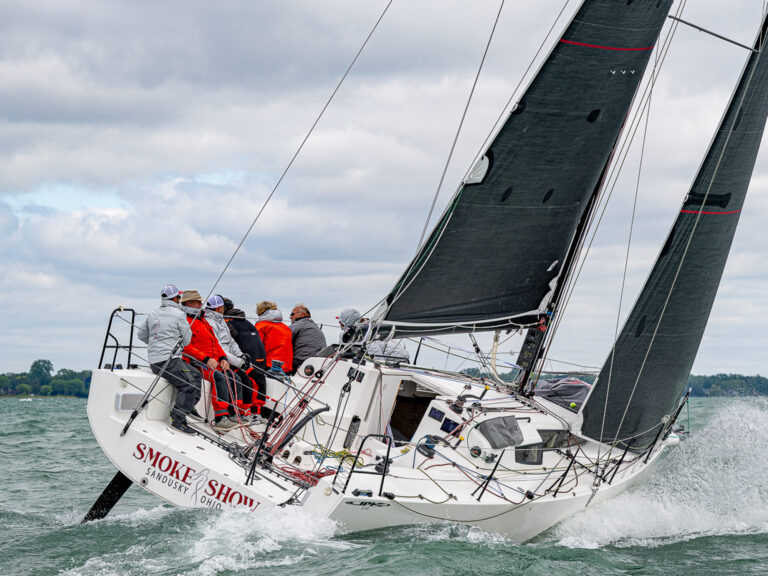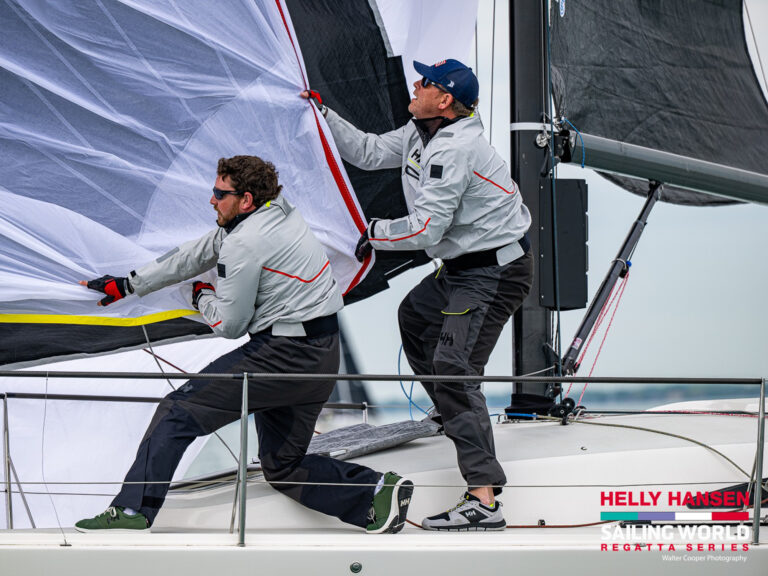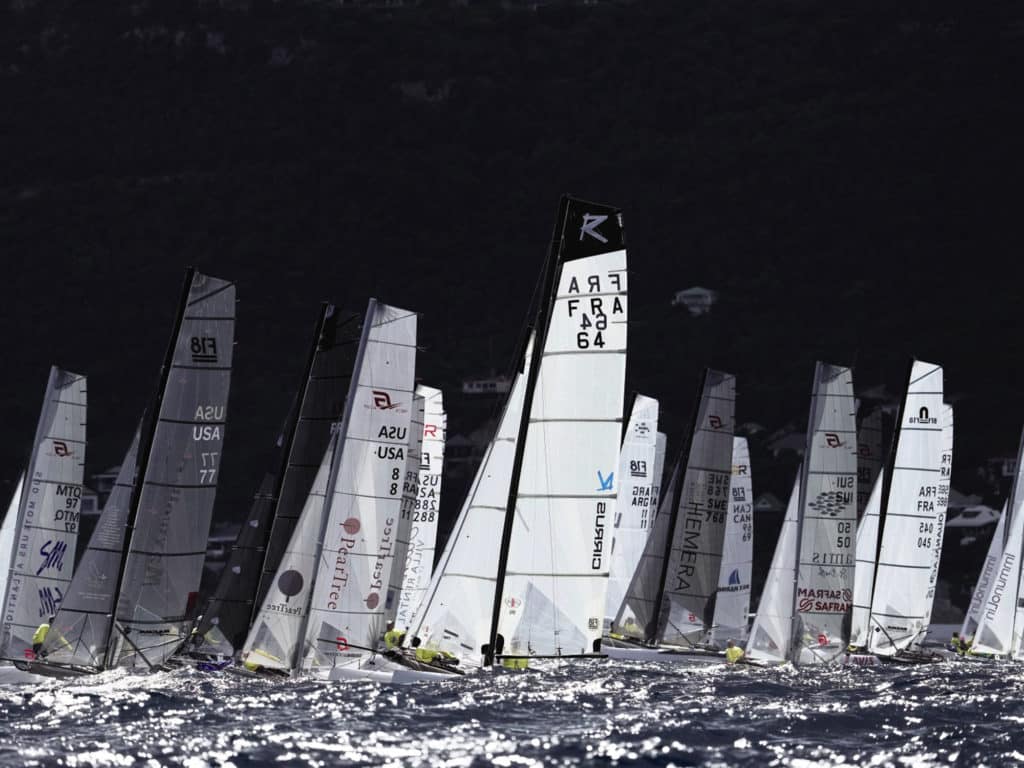
With St. Barts’ Gustavia Harbor disappearing behind us and the island’s mountainous terrain towering to our right, it feels so good to be sailing into the beautiful Caribbean Sea with a gusty 15-knot breeze and calm seas. Wind and spray rid us of three days of the sweaty boatwork we’ve put in to get our Formula 18 catamaran out of the shipping container, to the beach and meticulously rigged for the St. Barth Cata Cup.
We cruise the coast for a few miles and take in the sights, and suddenly find ourselves in the hard-hitting Atlantic Ocean. We’ve never sailed an F18 in anything like this, with 15-foot whitecapped rollers all around us. Launching off the crest and back down into the troughs of these giants is thrilling, but in the back of my mind, I’m starting to wonder how competitive we’ll be in these crazy conditions. As first-timers to this Cata Cup thing, we might just be out of our league.
The time comes for our first tack. My crew Matt Keenan, who I had pulled back into catamaran sailing after a hiatus, was rediscovering his trapeze skills when he swings into the boat, catches his foot in the hiking strap and tears it right off the trampoline. After a deep breath, I say aloud, “Well, we are going to have to do better than that.”
Keenan agrees, and a few heart-racing miles later we turn it into St. Jean Bay, point our bows toward the white, sandy strip, and run it up like a real beach-cat landing. We’ve arrived in the epicenter of the Cata Cup. It’s 2012, and I’m about to begin a 10-year run of participating in the best catamaran regatta in the world.
A truly one-of-a-kind event, the St. Barth Cata Cup began as a competition between Caribbean-based catamaran teams, but was reborn in 2008 as an open catamaran regatta. The switch to Formula 18s came a year later. This “modern version,” as sailors and organizers call it, is the brainchild of a group of locals who formed St. Barth Multihulls. This was the group with a vision to bring professional and amateur cat sailors from around the world to their island. But they didn’t just create another buoy-racing regatta. Their idea of fun is four days of exhilarating distance races, or “raids,” in big winds and big waves matched onshore by world-class social activities.
Competitive racing in a legit, high-caliber international class—in an exotic location and for an absurdly low entry fee—is too good to be true. For the roughly $1,200 entry fee, organizers house us, feed us, provide a rental car, and even ship our boat from Miami.
The hype surrounding the event is noticeable everywhere on the island: Local sponsors go all in, and the community ensures everyone has an amazing time, welcoming the sailors as if they were family. It’s been this way right on up to the 2021 edition, which hosted 62 teams, myself included for the fifth time since 2012. In 2017, only two months after a direct hit from Hurricane Irma, which destroyed buildings and stripped nearly every tree bare of its leaves, organizers made the event happen without missing a beat. Every year, they come back with surprises and changes—from the parties to the racecourses. The event is never exactly the same, and every competitor leaves wanting to come back for more. And it’s also why entry is a lottery, which opens seven months out from the regatta, with many teams not making the cut.
On the morning of my first Cata Cup race back in 2012, I recall the regatta’s principal race officer sounding a horn to gather the competitors around an easel with a big chart and an outline of the course explained in French. Our interpretation of the course is a bit confused, but given our rough delivery sail the day before, we agree to approach the first race conservatively. We have no expectations of actually leading, so our strategy is to follow the boats ahead of us. The only thing we’re certain of is that the windward mark will be set off La Tortue, an aptly named turtle-shaped rock. We’ll just sail in that general direction.
At the start, the wind peaks at 15 knots, and the waves are down to 10 feet. These are new conditions for us, and after sailing upwind for 20 minutes, we stare at a giant pile of rocks awash in the big waves. We realize then that there is no mark. The rocks are the mark. There is no one in front of us.
So much for following the boats ahead of us.
We forge on between La Tortue and the rock pile, oblivious to how close we can go before we have to tack. In this harried moment of uncertainty, Olympian and Volvo Ocean Race veteran Carolijn Brouwer is closing in fast. I’m pretty sure she’s telling us to tack, and I respond, “You first!”
It was a great lesson to learn the adrenaline and skill it takes to navigate the courses at this event, and that you can sail quite close to most of the rocks.
The local sponsorship works by partnering with a team and putting signage on the boats. As luck would have it, we scored the famous and posh Nikki Beach Club, which is right next door to the regatta headquarters, where the majority of the boats sail from. With one or two raids per day, all the competitors return to shore in between races for a satisfying supplied lunch, some beach recovery, and even a nap if needed.
It’s all very civilized, but well-deserved after beating up our bodies every race. Each year, the round-the-island race serves as the pinnacle of the event. Weaving in and out of bays and tearing out into the big seas, there’s a magical mixture of upwind crashing through waves, blast jib reaching, and cruising through pristine waters on the south side of the island. While an opportunity to take in the beautiful scenery, the competitive spirit remains tense to keep racing until the end. On this particular race around, we enjoy a tight battle with Olympian and catamaran legend Enrique Figueroa. Trust me, we’re more than ecstatic to place second to “Quique.” And to top it off, as soon as our bows tap the powder-soft sand, hostesses from our boat sponsor Nikki Beach serve us chilled Champagne. It’s all a bit surreal and unexpected, the overall theme of this event that you must learn to embrace.
While many regattas have a party, the Cata Cup sets a new bar after each day of sailing, with dinner served and followed by a concert from top entertainers. Daily winners are called on stage and given a bottle of fine local rum. And after the prizes are doled out, the band that’s been jetted in for the night ignites the dance floor. During their set break, a slick, professionally edited video projects onto an oversize inflatable screen on the beach. It’s a visual feast of tropical high-
performance cat sailing—as if we need to be reminded how lucky we are.
Every time I go and as soon as I step on the island, the smile on my face is permanent for days—no, weeks—afterward. All of us have regatta memories, but this has become a dream I want to relive every year. Thankfully, there are plenty of event videos to hold me over until next year.

